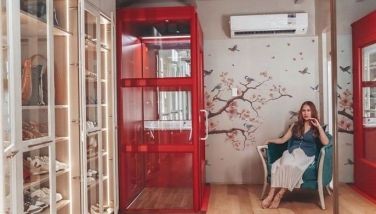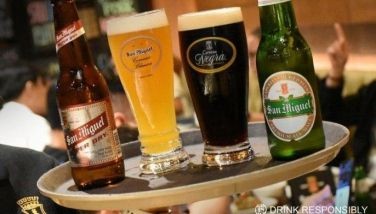Saving our heritage

In the first week of the Aquino presidency, the typical comment from neutral observers is that they feel the kalbaryo of P-Noy.
The country simply has too many problems, most of them crying out for urgent attention and competing for scarce funding. Compounding this is the fact that P-Noy, like his predecessor after EDSA Dos, is saddled with high expectations.
With all those pressing problems, it’s doubtful that deteriorating historical sites and national treasures can compete for official attention.
This makes it all the more appreciated when foreign friends chip in to save national treasures from decay.
Last Tuesday I visited the minor basilica of San Sebastian in Manila, for Belgian Ambassador Christian Meerschman’s celebration of the start of his country’s six-month turn at the presidency of the European Union (EU).
My last visit to the church must have been in my teenage years, when the unique beauty of the edifice eluded me. The church is located in Manila’s University Belt, an area you remember not for religious worship but for rundown student dormitories doubling as short-time laboratories for students’ sex education, alleys where drug pushers lurk, and holes-in-the-wall selling fake diplomas. In an area where you have to hang on tightly to your purse while walking to avoid pickpockets, there’s not much room for architectural appreciation or religious devotion.
Still, considering its history, the church can use better tourism marketing (paging Bertie Lim). Perhaps tourism receipts can add to what foreign governments are currently contributing to save the all-steel church from the biggest threat to any metal: rust.
* * *
The Belgian ceremony was at sunset, and muted lighting meant more eyestrain for those taking a close look at the interior painting rendered by Filipino artist Lorenzo Rocha together with his students Isabelo Tampinco and Felix Martinez. The artists had painted the interiors to make the walls and columns look like stone, with religious scenes depicted on the ceiling and wall sections. I saw EU Ambassador Alistair MacDonald rapping on a column to see if it was really made of steel.
At dusk the muted interior lighting gave the altar with an image of Our Lady of Mount Carmel, donated by Carmelite nuns from Mexico City in the 17th century, a golden glow – the kind I have always associated since childhood with spiritual peace. The lighting also helped conceal the deterioration of the steel, but a slide presentation showed guests the extent of the corrosion.
How do you restore the steel and rustproof the church without destroying the original trompe l’oeil paintings?
In the 19th century, Belgian foundries forged 1,500 tons of prefabricated metal parts that were then shipped to Manila and assembled to create one of the few all-metal churches in the world. The basilica could be the only prefabricated all-steel church on the planet.
Belgian missionaries have been active in this country for centuries, and it’s no surprise that they would be involved in building churches. After earthquakes, fire and termites thrice destroyed masonry churches built on the same land donated in the 17th century by St. Sebastian devotee Bernardino Castillo to the Catholic Church, the Augustinian Recollects of San Sebastian decided to build an all-metal place of worship. Spanish architect Genaro Palacios was commissioned to design the church, in a style that has been described as neo-Gothic and “earthquake Baroque.” Belgian engineers supervised the construction, which was completed in 1891.
Stained glass panels were imported from Germany. Chinese and English tradesmen have also been credited for work on the church.
In 1998 the church was included in the World Monuments Fund’s biennial watch list of the 100 Most Endangered Sites. This year, with about 36 kilos of steel already destroyed and conservators fearing that the structural steel components in cavity walls and sheathing have weakened considerably, the church is again on the watch list.
The church has received a grant from the National Commission for Culture and the Arts. The Belgian Steel Federation is helping to preserve the metal structure, and conservators are tapping the group that undertook the restoration of the Statue of Liberty for help.
Whether all those efforts are enough remains to be seen. The international donor community can be tapped, but donors also prioritize their aid programs. When millions of people remain without the basic necessities such as food, shelter and health care in this country, where will foreign donors put in their money first?
Similar problems bedevil efforts to save other national treasures such as the Ifugao Rice Terraces and the tombs in Sagada. Younger generations of Filipinos are losing their national heritage, and many of them don’t even care.
But even with many other pressing problems, it is possible to save the nation’s treasures. It is not yet too late.
- Latest
- Trending


















